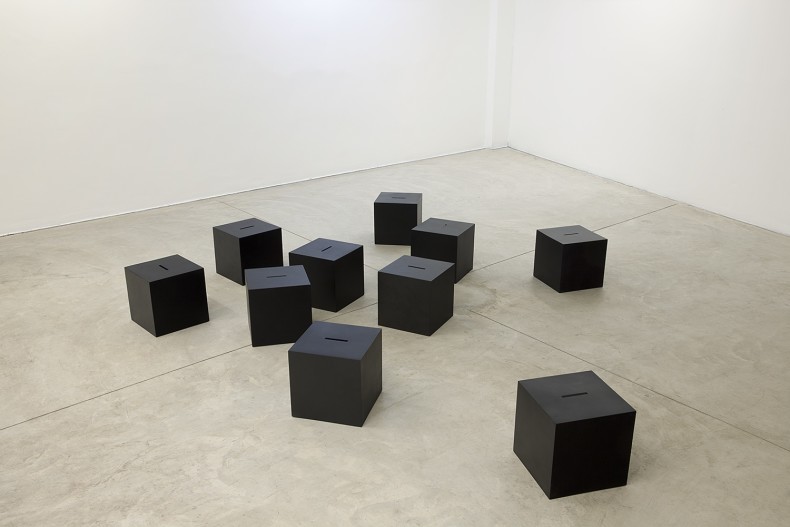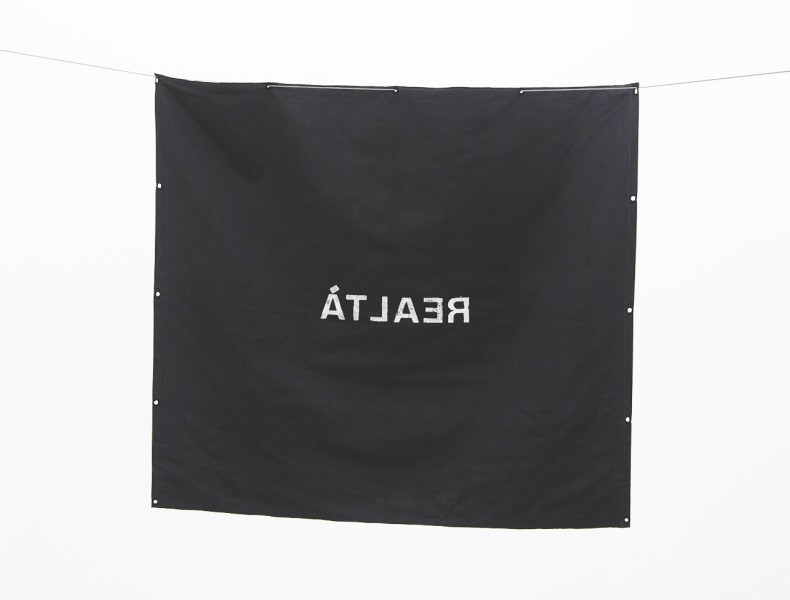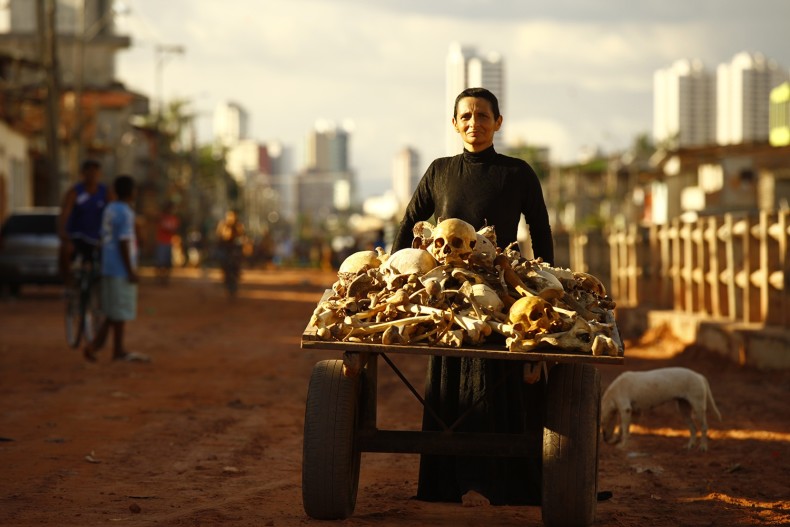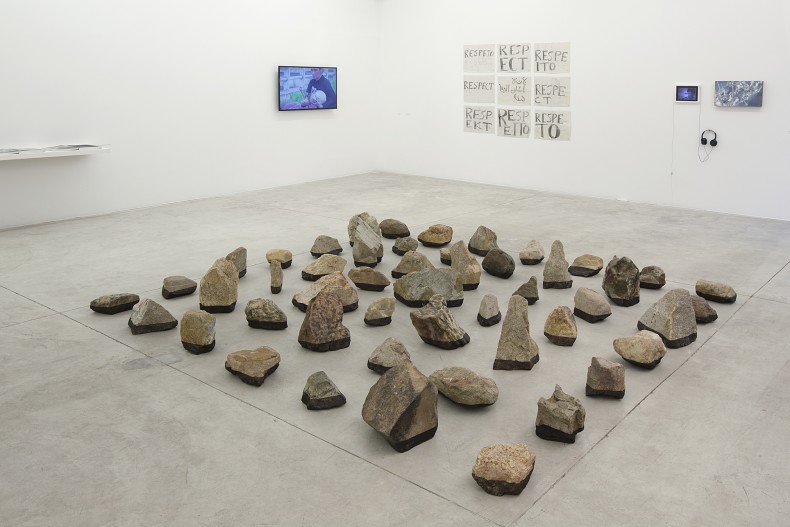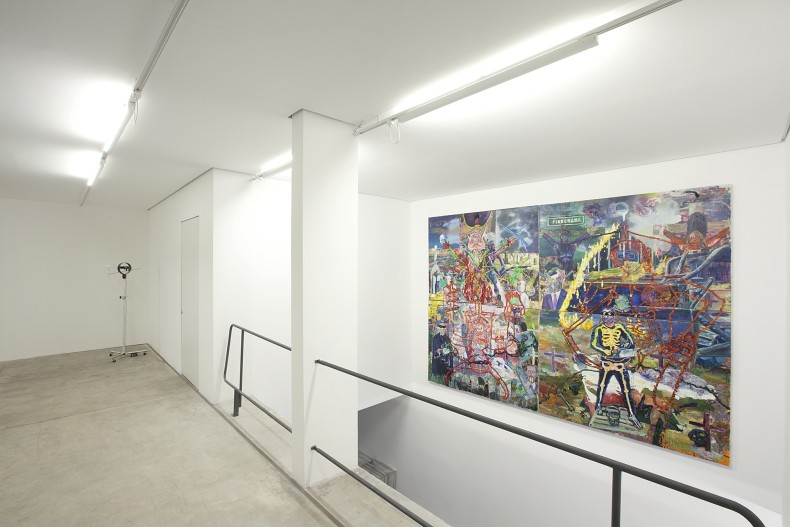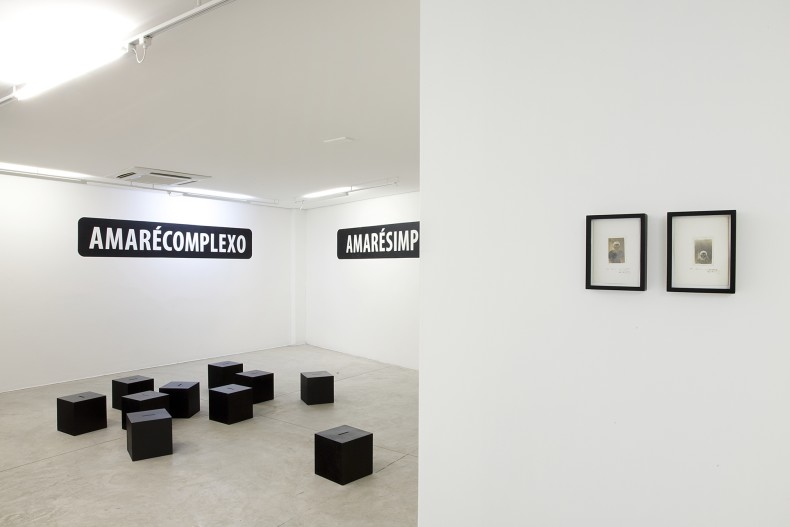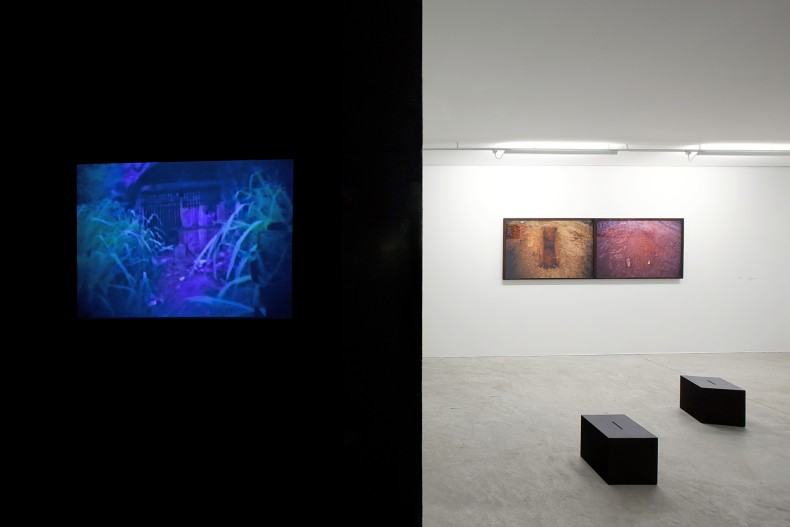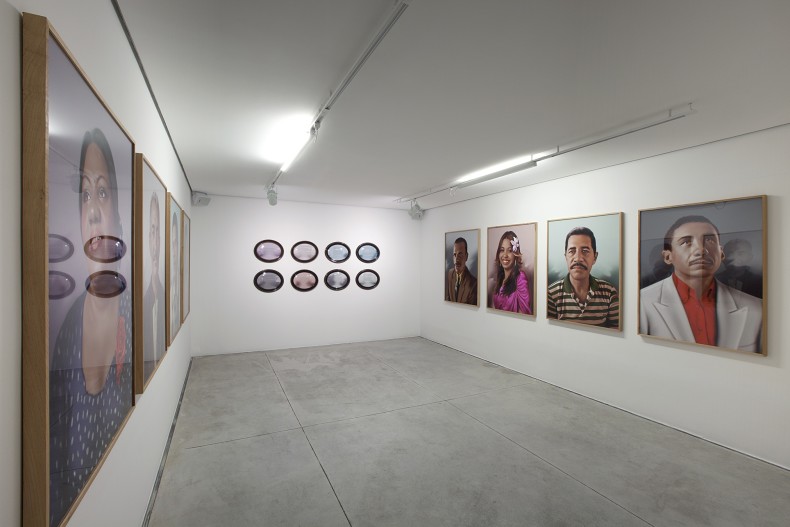Cães sem Plumas [prólogo] (Dogs without Feathers [prologue]) brings together visual artists from different generations around an expression created by João Cabral de Melo Neto. These artists are brought together not for having created works marked by the poet’s sharp writing, but for, just as Melo Neto, being restless regarding things they witness in the places where they go to or live in, and which Melo Neto’s text expresses in a unique manner. It is a show about those who, in Brazil, live on the verge of losing whatever it is that confers them humanity; it could, nevertheless, be about people who live elsewhere and also survive in equally precarious conditions. Whereas the focus is openly arbitrary, it also expresses the urgent need to address something that still exists in this country, even though it should have ended and, besides, is often not talked about.
João Cabral de Melo Neto’s poetry is succinct; it has no room for rhetorical excess. It is built on the careful removal of the many possible meanings carried by each word, thus lending them a preciseness that renews the language. Since everything that is redundant or residual is removed from the text, it was appropriately dubbed the “poetry of the less.” However, this removal does not take away from the words their power to echo, sharply and in detail, ideas and things that make the world the way it is. On the contrary, the succinctness of his poetry resonates, comments on, and reexpresses, in its own terms, a social sphere marked by lack and need.(1) Perhaps no other poem by João Cabral de Melo Neto expresses this relationship between words and the life they contain as precisely and as vividly as “O cão sem plumas” [“The Dog without Feathers”], a text in which the author describes, with his inventive language, the 1950s riverside Recife crossed by Capibaribe River. According to the poet’s critic and concise view, this environment had something of “the stagnation / of hospitals, prisons, asylums, / of the dirty and smothered life / (dirty, smothering laundry) / past which it slowly flowed,” the river. As the words emerge in the poem, one is no longer able to differentiate the course of Capibaribe River from the course of the lives of those who live near its water and mud; thus, the description of a landscape of paucity simultaneously narrates the ruin of the people who inhabit the landscape. Both the river and the dwellers of such a place would be “dogs without feathers”—an expression that seems to define, by means of an extreme paradox, situations of complete destitution. A “dog without feathers,” writes João Cabral de Melo Neto, “is when a tree without voice. / It is when like a bird / its roots in the air. / It is when something is so deeply / gnawed it is gnawed / to what it doesn’t have.”(2)
This exhibition does not intend to evoke the environment or the time described in the poem, nor does it wish to illustrate the text or translate it into images. It intends to claim the use of the idea of a “dog without feathers” to identify, in the production of a set of visual artists, groups of people, in Brazil, whose lives are marked by lack and absence. Communities that are excluded—as a result of disregard or sheer domination—from the benefits brought about to many people by the modernizing transformations the country has gone through in the latest decades in the fields of technology, macroeconomic management, and even citizenship and social protection. People who live in the margin of almost everything others have achieved in Brazil, and to whom there is only forbiddance. “Dogs without feathers” are, for instance, most part of the country’s Indigenous peoples, who are oppressed by diseases and by the endless greed for their lands; the mentally ill and the convicts, who are forgotten in failed prison and healing systems; or children and adolescents who live on the streets and spend their short lives begging, committing crimes, and, inevitably, becoming drug addicts. “Dogs without feathers” are also those who, as a result of the widespread violence in the countryside or of the speculative greed regarding the urban space, are forced to leave their land and lose their means of survival; or the many whose rights have been taken away by the State, such as those who were tortured by the political police in the past and those who are persecuted today, under a democratic regime, for being black, homosexual, or plainly poor. Included in this openly incomplete list of “dogs without feathers” are the men and women who are victims of an absolute lack of assistance and are not identified even after their death—outcasts even after the end. “Dogs without feathers” are also the foreigners who, attracted by the supposed hope for a better life, end up being humiliated in every way. This exhibition aims to show these people who are not included in the productivity-oriented figures that guide and measure the economic progress in Brazil.
Cães sem Plumas [prólogo] (Dogs without Feathers [prologue]), however, has nothing to do with a very common discourse based on a mere moralizing report that exposes the country’s serious social fractures and, at the same time, appeases them by tracing their causes to a different time and place, which never correspond to the here and now. The intention of the exhibition is to include—in a narrative that is simultaneous to those that describe what is considered to be progress in Brazil—different sorts of damage inflicted upon specific portions of the population that are often absent from the country’s symbolic landscape. The inclusion is achieved by means of bringing together in the exhibition space creations that evoke, in a more or less direct way, the taking away of so many lives. It goes without saying that several other damages are not included in this show, just like several other artists who transform these damages into more images and shapes, lending social visibility as well as some voice to those who suffer. The aim here is not to exhaust the theme, but to raise issues that are still little addressed in Brazilian exhibition venues, as if they were not worth it or, even, as if they did not exist at all. And although the organization of this exhibition in this field is marked by a clear contradiction—after all, the growing dynamics of the so-called art scene is a result of the country’s current growth model—not carrying it out would mean giving up the power that small gestures and noises have to cut through conventions that define whatever it is that belongs to the common sphere. It would mean saying that the new nexuses among people, things, and facts that establish what a place is do not produce the transformative effect of affections. It would mean forgetting what art is capable of.
Cães sem Plumas [prólogo] (Dogs without Feathers [prologue]) marks the beginning of a more comprehensive and lasting research, even though its major premises are already presented here. First, to recognize that, in Brazil, a sort of life in which the humanity of a person is gradually dismantled still remains and is reproduced. Then, to know that it is impossible to dissociate this situation of extreme deprivation from the indifference observed in those who keep their humanity. The degree of dispossession experienced by these “dogs without feathers” clearly shows that regardless of the noticeable changes and of having benefited many people who used to have so little, the country remains marked by inequality and exclusion. This exhibition is about gnawed lives. It is about those who are not taken into account.
Moacir dos Anjos
(1) Antonio Carlos Secchin, João Cabral: A poesia do menos (São Paulo: Duas Cidades; Brasília: INL, Fundação Nacional Pró-Memória, 1985).
(2) João Cabral de Melo Neto, ‘The Dog without Feathers,’ in Education by Stone: Selected Poems by João Cabral de Melo Neto. Trans. Richard Zenith (New York: Archipelago Books, 2005), 57.
